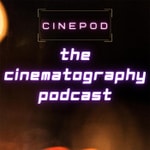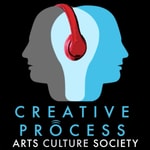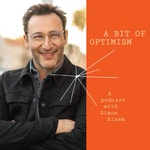The Cinematography Podcast – Détails, épisodes et analyse
Détails du podcast
Informations techniques et générales issues du flux RSS du podcast.

The Cinematography Podcast
The Cinematography Podcast
Fréquence : 1 épisode/7j. Total Éps: 299

Classements récents
Dernières positions dans les classements Apple Podcasts et Spotify.
Apple Podcasts
🇨🇦 Canada - filmInterviews
31/07/2025#29🇩🇪 Allemagne - filmInterviews
31/07/2025#14🇺🇸 États-Unis - filmInterviews
31/07/2025#90🇫🇷 France - filmInterviews
31/07/2025#19🇨🇦 Canada - filmInterviews
30/07/2025#20🇩🇪 Allemagne - filmInterviews
30/07/2025#10🇺🇸 États-Unis - filmInterviews
30/07/2025#61🇫🇷 France - filmInterviews
30/07/2025#16🇨🇦 Canada - filmInterviews
29/07/2025#11🇩🇪 Allemagne - filmInterviews
29/07/2025#4
Spotify
Aucun classement récent disponible
Liens partagés entre épisodes et podcasts
Liens présents dans les descriptions d'épisodes et autres podcasts les utilisant également.
See all- http://florianhoffmeister.de/
44 partages
- https://www.aputure.com/
37 partages
- https://www.hbo.com/watchmen
25 partages
- https://youtu.be/IlpismVjab8
17 partages
Qualité et score du flux RSS
Évaluation technique de la qualité et de la structure du flux RSS.
See allScore global : 48%
Historique des publications
Répartition mensuelle des publications d'épisodes au fil des années.
Strange Darling cinematographer Giovanni Ribisi, pt. 2
mercredi 28 août 2024 • Durée 57:18
From Actor to Auteur: Strange Darling DP Giovanni Ribisi, pt. 1
mercredi 21 août 2024 • Durée 01:11:17
Bringing 3 Body Problem to life: DP Jonathan Freeman, ASC
samedi 22 juin 2024 • Durée 45:45
Kays Al-Atrakchi: director, composer, colorist, VFX artist and filmmaker of the upcoming short film, Everbliss Inn
mercredi 21 septembre 2022 • Durée 01:05:07
Brendan Uegama, CSC on Moonshot, Riverdale, Truth Be Told, Child’s Play and Mike, the Hulu Mike Tyson dramatic series
mercredi 14 septembre 2022 • Durée 53:08
Honk for Jesus, Save Your Soul director Adamma Ebo, producer Adanne Ebo, and cinematographer Alan Gwizdowski
mercredi 7 septembre 2022 • Durée 42:25
Director Steve Pink and cinematographer Bella Gonzales on the indie film The Wheel
mercredi 31 août 2022 • Durée 01:03:01
Cinematographer Cybel Martin on A League of Their Own, Black As Night, horror movies and more
jeudi 25 août 2022 • Durée 58:28
Girl Picture director Alli Haapasalo and cinematographer Jarmo Kiuru, FSC
jeudi 18 août 2022 • Durée 50:12
Cinematographer Larkin Seiple on shooting Everything Everywhere All At Once, Swiss Army Man, and the Emmy nominated Gaslit
jeudi 11 août 2022 • Durée 01:32:08









